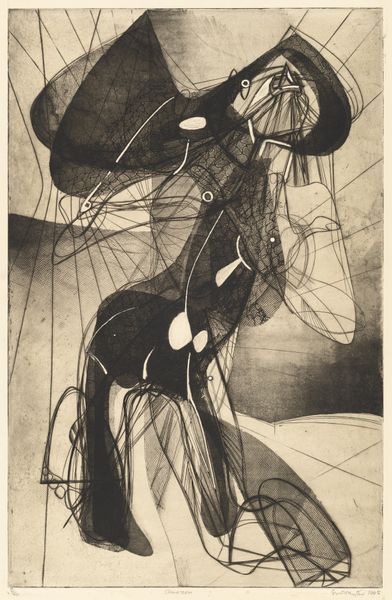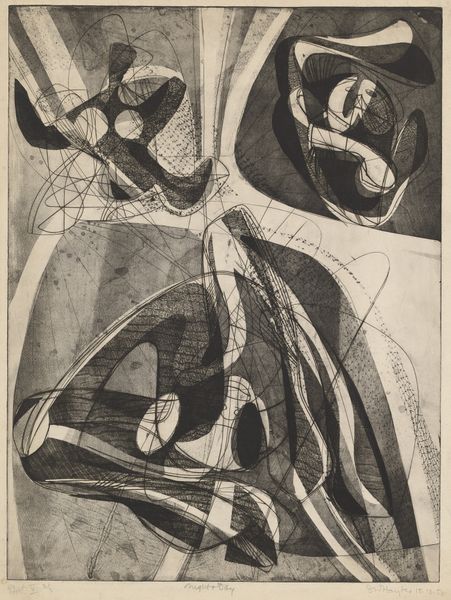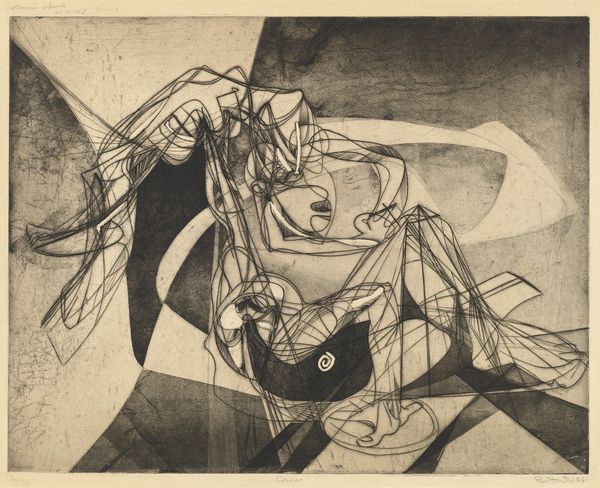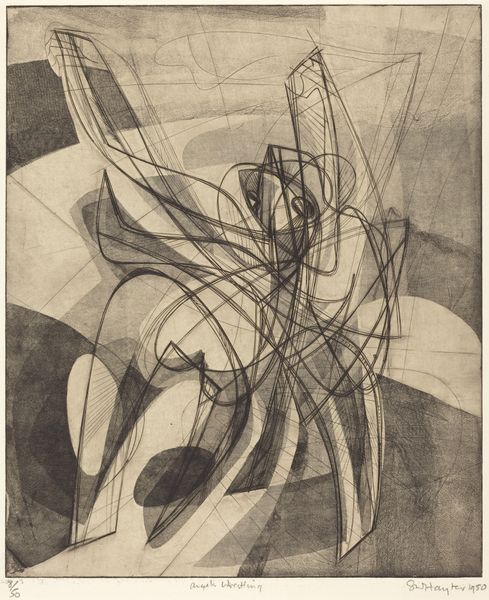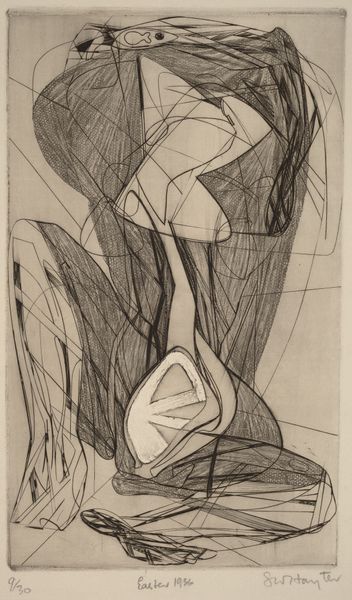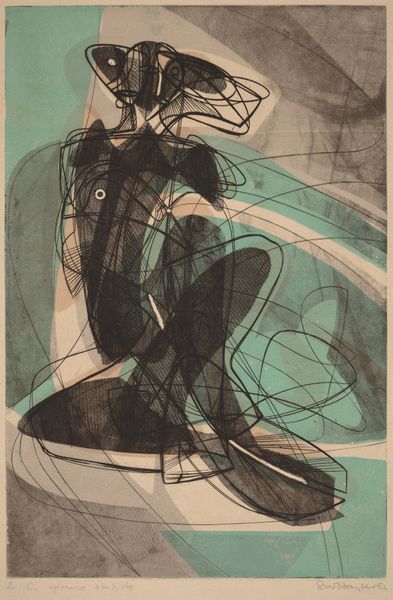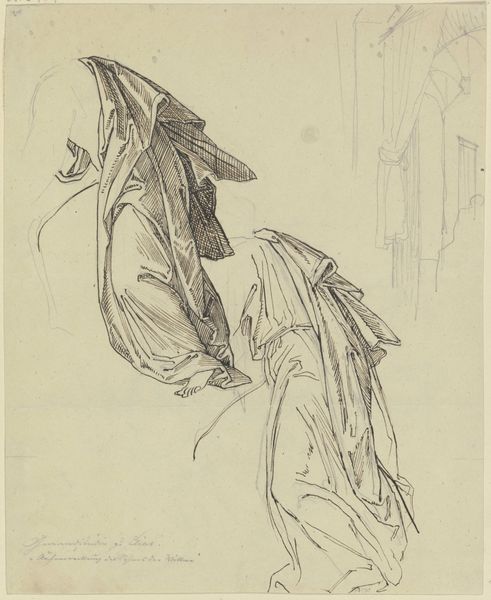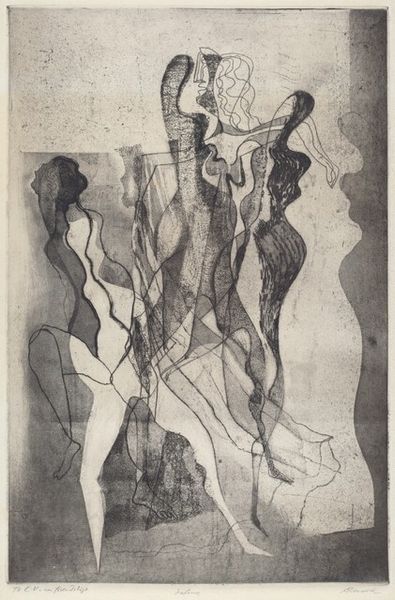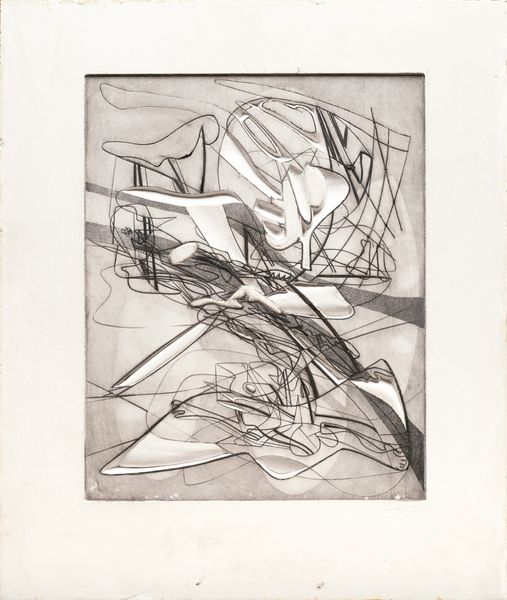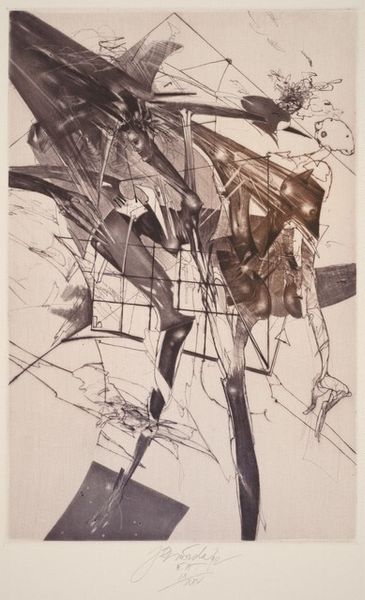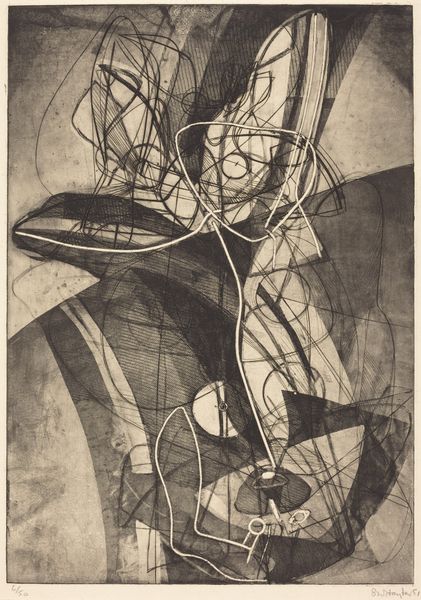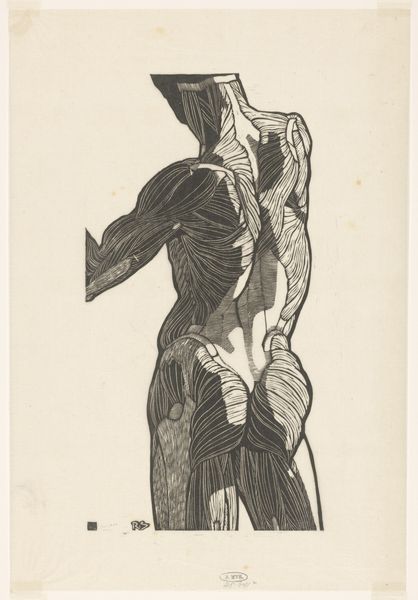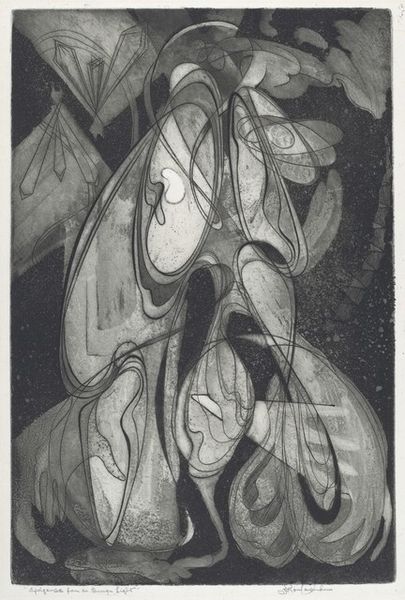
drawing, print, etching
#
drawing
# print
#
etching
#
pencil sketch
#
figuration
#
abstraction
#
line
Dimensions: plate: 62.7 x 39.3 cm (24 11/16 x 15 1/2 in.) sheet: 65.9 x 47 cm (25 15/16 x 18 1/2 in.)
Copyright: National Gallery of Art: CC0 1.0
Curator: So, before us we have Stanley William Hayter's 1945 etching, drawing and print called "Amazon." It’s all energy, swirling lines barely holding onto any sense of recognizable form. Editor: My first impression is one of barely contained chaos. Like witnessing something erupting. The lines fight each other, yet there’s a strange underlying beauty to the struggle, a dynamic, pulsing tension. Curator: Hayter was quite interested in surrealism and automatism. These ideas are definitely dancing in "Amazon" too. It's like he let his hand wander across the plate, almost subconsciously, creating these fragmented, interwoven forms. He wanted to tap into the unconscious mind, unleashing pure creative energy, not confined by traditional constraints of figurative art. Editor: And "Amazon," of course, brings to mind the mythical warrior women. I can’t help but read a feminist message here, especially given its creation during wartime. Is it a symbol of strength, perhaps even rage, in the face of societal upheaval? Or could it reflect the blurring lines between genders that often occurs during wartime mobilization? Curator: Well, perhaps a bit of both. I also see a conversation with Cubism in the distorted perspective and fragmented forms. It’s almost as though Hayter dissected a figure, shattered it into a million pieces, and then reassembled it with wild abandon, from new angles. Editor: That reassembly also gives me pause. To what extent is it an abstraction of the human form, and to what extent does the title encourage us to understand it as a reference to exploitation and colonial violence against indigenous Amazonian populations and their ancestral land? The historical context matters. Curator: That’s a really powerful point, how context frames the image. It's also important to note Hayter’s own unique printmaking techniques. The way he manipulated the metal plate, carving and scratching into its surface. He achieved a very palpable sense of depth. It has an undeniable emotional texture to it, which then also contributes to how viewers interpret the work. Editor: Absolutely. These printmaking processes give this work a unique texture, and add to the impact of its intersecting lines, hinting at more profound layers. Hayter prompts questions, demands more from its viewers than a single, simple understanding of a drawing. Curator: Right! The tension between abstraction and figuration asks the viewers to let go of the urge to pinpoint literal imagery and just engage with the underlying rhythm and vitality of line and texture. That itself is quite freeing. Editor: Ultimately, “Amazon” embodies both liberation and the necessity of engaging with deeper and perhaps obscured meaning. It offers space for new readings and reinterpretations through careful looking, opening paths to more thoughtful and meaningful insights.
Comments
No comments
Be the first to comment and join the conversation on the ultimate creative platform.
